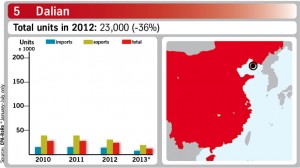Following fast growth in vehicle flows, China has licensed more ports for import to the country, while terminals have invested in storage and value-added services. However, an uncertain market and port space issues are making disruptive waves for some brands and shipping lines.
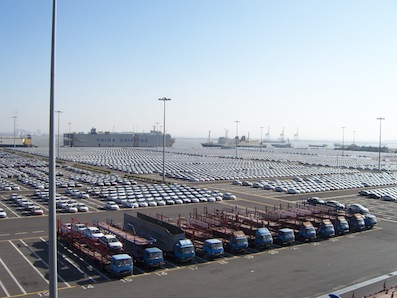
The Chinese government has historically allowed only a few ports to import vehicles into the country, which had been limited to Shanghai, Tianjin, Guangzhou and Dalian, before Qinzhou was added in 2010. But recently the licence has been granted to the ports of Fuzhou, Qingdao, Zhangjiagang and Ningbo Meishan (see map below).
China’s entry ports are not just centres for shipping, but are also permitted to clear customs, which they do for vehicles that arrive in China by land or by air. Until the end of 2012, the only approved air/land border points were Shenzhen Huanggang, near to Hong Kong, and Manzhouli, bordering Russia; but in November the Chinese government also approved Beijing airport for customs clearance.
Before this change vehicles that were imported directly to the capital (whether by air, by transhipment or a different land entry point than Shenzhen or Manzhouli) would have had to clear customs via neighbouring Tianjin. Thanks to the change, vehicles can be cleared directly at the airport, which experts say has cut import times in half, while also reducing road haulage costs.
There is no restriction on ports for vehicle export, but in practice Shanghai, Tianjin and Guangzhou are still the dominant ones in use. A small quantity passes through Dalian, Qingdao, Yantai and Lianyungang, according to Owen Xie, chief operation officer and vice-president of NYK Automotive Logistics (China).
Strong ro-ro terminal developments
While in the past finished cars were often moved in containers when volumes were low and ro-ro facilities in the country were scarce, most exports today are sent by ro-ro. Ro-ro services make up nearly 90% of all car imports, too. All of the approved nine ports have ro-ro capabilities, including Meishan, which completed renovation work earlier this year. While the port has yet to handle imports, in July this year it sent a shipment of 1,800 Geely cars bound for Ukraine.
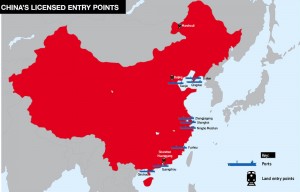
The country’s largest ro-ro port and vehicle terminal is Shanghai Haitong International Automotive Terminal, which had a throughput of 1.28m vehicles in 2012, including 1,500 vessel calls. The port handled 730,000 imports and exports, plus 550,000 domestic moves, according to the China Ports Association RoRo Section (CPA-RoRo), the ro-ro arm of China’s port association. Shanghai Haitong serves customers including Shanghai Volkswagen, Shanghai General Motors, Chery, Geely, and a number of international brands. The majority of imports through Haitong are of German, American and Japanese brands. Chinese vehicle exports through the terminal mainly head for Southeast Asia, the Middle East, Africa and Latin America.
Tianjin, China’s second-largest ro-ro port, has seen annual volume rise steadily, from 700,000 vehicles in 2010 through 790,000 in 2011 to 864,000 last year. The port handled 480,000 imports and exports, along with 384,000 domestic moves. However, Tianjin has stood out for its imports, surpassing Haitong by 20,000 units last year for a total of 380,000 vehicles. The port has handled car imports mainly from Europe, America, Japan and South Korea. Tianjin port distributes vehicles to consumers in Beijing, Tianjin, Hebei and Northwest China, according to a manager at Tianjin port.
Among the top OEMs at the port of Tianjin for export include Great Wall Motors, FAW Tianjin, Chery, Brilliance, and SinoTruck. In terms of domestic trade, the port handles outgoing Tianjin FAW-Toyota and Great Wall cars and incoming GAC-Toyota, Shanghai VW and Shanghai GM cars.
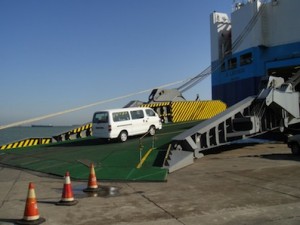
The growing business has caused some capacity concern at ports. “With continuous growth of exported and imported volumes, the main challenge lies with the storage capacity,” comments Xavier Leroi, managing director and head of China for the ro-ro shipping line Wallenius Wilhelmsen Logistics (WWL).
Insufficient yard resource has been a common challenge for ro-ro ports, according to officials from Shanghai Haitong, a terminal that is also a key member of CPA-RoRo. Several sources point out that the design of many terminals has not met the market’s demands. Tianjin’s original ro-ro terminal, for example, exceeded its design capacity after the first year it was built in 2005. As volumes rose to twice the capacity, causing a backlog of vehicles and waiting vessels, TPG Global RoRo Terminal was built in 2008 and put in use in 2009. The port has since operated with two terminals for automotive handling.
Since 2010, Tianjin and Haitong have further expanded their capacity and resources. Haitong has added another two multi-storey storage facilities to make a total of three with space for 8,500 cars. Tianjin has completed a new yard project for car storage and distribution that offers space for 5,120 cars. But capacity expansion is going to be a long-term challenge for the wharf given the high price of land, says the Tianjin source.
Early this year, Haitong initiated a trial run of its ro-ro facilities at Shanghai’s Yangshan Deep-Water Terminal, which is used predominantly for container ships and imports a small quantity of luxury cars by containers. According to a source at Haitong, extending the port’s ro-ro terminals will provide further relief from berth
and space pressure. NYK’s Xie agrees. “This [expansion] extends Haitong’s ro-ro capabilities and its market coverage,” he says.
Not all Chinese ports are suffering a crunch in resources, however. According to CPA-RoRo, because of the proximity of several ports to one another, some terminals are underused. “Admitting China’s [car] export and import shall be on the up-curve track, we need more investment in facilities at the current service ports. But we don’t need new ports,” says Joo-Hun Chi, managing director and head of China of Eukor Car Carriers (Beijing), a South Korea-based ro-ro shipping line.
According to WWL’s Leroi, expansion work is also going on at Guangzhou and Dalian. “But in Shanghai further developments need to happen,” he notes.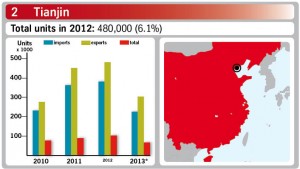
Not all the developments needed are about space. According to a source at CPA-RoRo, investment is also needed for new technology. For instance, some carmakers and shipping lines are concerned about a lack of power station solutions on wharves for electric vehicles.
The need for more multimodal connections
Multimodal connections are rare at Chinese ro-ro ports, and could also be an area of future investment. Among ports currently in service for vehicle handling, Shanghai Haitong has a barge connection and Dalian terminal has a direct rail link, while other ports lack such links. According to Xie, ports have been largely pre-defined during their initial construction.
Regions along the Yangtze River, such as Chongqing, where Ford Changan has large factories, and Wuhan, where Chery is based, have seen the emergence of inland port terminals that either fully specialise or partially engage in vehicle ro-ro operations. Their volumes handled in 2012 took up some 20% of China’s vehicle ro-ro transport business, according to CPA-RoRo. OEMs on the upstream Yangtze River have vehicles shipped by barge to Shanghai for transhipment to ocean vessel for export. Ford has moved vehicles along this route for more than a decade.
While companies like WWL are involved in inland distribution, domestic routes are still restricted to Chinese shipping companies. Foreign logistics companies must operate through a joint venture that uses a local, Chinese transport business.
Added-value services
Apart from engaging in conventional loading and unloading work and warehousing, ports handling vehicles have also been phasing in added-value services 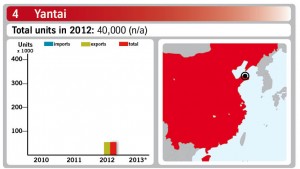 such as indoor storage, distribution, CIQ (China’s entry-exit inspections and quarantine administration) and PDI (pre-delivery inspection). Some of the facilities for these services are still under construction, while Haitong is ahead of others, with several multi-storey storage facilities, a vehicle distribution centre (VDC) and vehicle processing centre (VPC) already in service, along with an advanced IT system.
such as indoor storage, distribution, CIQ (China’s entry-exit inspections and quarantine administration) and PDI (pre-delivery inspection). Some of the facilities for these services are still under construction, while Haitong is ahead of others, with several multi-storey storage facilities, a vehicle distribution centre (VDC) and vehicle processing centre (VPC) already in service, along with an advanced IT system.
Xie points out that these services are more common for imported foreign brands than for Chinese carmakers exporting vehicles, for whom price competition is still the most important consideration.
“In general, vehicle importers are more likely to purchase added-value services at or near ports,” says Xie.“Exporters so far do not give them too much consideration.”
Xie predicts that ports will deliver more multi-purpose services and work with logistics providers on extending service to carmakers.
Some shipping lines, including WWL, offer similar terminal services too, including clearing customs, storage and PDI. “While local ports, logistics companies and shipping lines offer similar services on paper, their solutions and products differ in terms of price, quality and systems utilised and the degree of integration with customers and local authorities,” says Leroi.
Leroi notes that ports must also balance the needs of their different customer groups, including more operational quality for shipping lines, and more convenience and flexibility among manufacturers. The increase in the number of port options for China also puts competitive pressure on each terminal to improve their costs and efficiency.
Making the right port choice
Although ro-ro carriers try to meet customer requirements when choosing which ports to call, they still face a number of limits. Besides the restrictions in certified ports for import, transhipment in China by foreign flag vessel is not yet allowed, for example.
That said, shipping lines have their own criteria in choosing ports. “We have high expectations when it comes to infrastructure and quality of handling," says Leroi. “In this respect, the historical ports [Shanghai, Tianjin, Guangzhou and Dalian] have a clear advantage.”
BMW 166,580
Mercedes-Benz 114,400
Audi 79,275
Volkswagen 77,270
Lexus 60,200
Land Rover 60,200
Toyota 49,200
Subaru 45,150
Chrysler Jeep 42,150
Volvo 36,100
Kia 33,100
Hyundai 31,100
Porsche 30,100
Renault 27,100
Cadillac 22,000
Others 174,600
Total 1,003,504
source: LMC
Likewise, Eukor’s Chi puts safety and market size among priorities for carriers when choosing ports, along with efficiency and cost. “On the exporter and importer side, the priority must be equally service, such as more frequency, and total factory to dealer cost,” says Chi.
In deciding on ports, exporters in China consider a mix of factors including location, shipping schedule and shipping rates. “Currently, Geely, Chery and JAC mostly export from Shanghai, but in future they’re likely to choose other ports like Ningbo and Zhangjiagang,” says NYK's Xie. “If the size of their export volume [at those ports] is big enough, shipping companies may also consider adjusting their routes and schedules, or the ports will consider offering more attractive prices.”
WWL primarily uses Shanghai, Tianjin and Guangzhou; it also has irregular port calls in Dalian, Qingao and Lianyungang, according to Leroi. But according to one local Chinese carmaker source, the frequency of ro-ro vessel service for exports among all carriers is not always up to scratch. Sometimes ro-ro ships call at a port only once or twice a month and cannot quite meet the carmaker’s export needs.
Importers, on the other hand, tend to choose ports based more on consideration to customs procedures, CIQ services, warehousing and distribution, including hinterland connections.
Modest growth
Car exports in 2012 grew nearly 20%, according to statistics produced by the China Association of Automobile Manufacturers (CAAM). Exports have levelled off this year, down less than 1% in the first half of the year, although analysts expect that there is more growth to come. John Zeng, managing director of LMC Automotive Consulting, says that a certain level of production overcapacity will be one of the driving elements for exports, as will be a more liberal government policy. Local carmaker Chery continues to export the most, although Geely and Shanghai GM have been increasing its exports.
Following several years of growth, China’s vehicle imports have slowed this year, dropping 11% in the first half of the year, driven partly by slower growth, restricted car ownership in large cities and increased localisation in China.
“German cars have the dominant percentage, and this perhaps is not going to change in the short run,” comments Zeng.
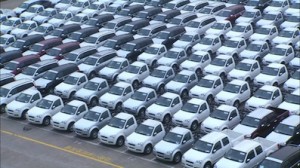
While domestic sales in 2013 have been strong overall, there is also uncertainty following slower GDP growth and a rebalancing in the Chinese economy. A general slowdown in domestic demand could certainly reshape import and export activities, with trading policies, tariffs, exchange and interest rates all adding to the changing picture for China. Despite all this, sources at the CPA-RoRo expect that more ports will be granted licences for import, which would give manufacturers and shipping lines more options. Although services for exports need to catch up, investment in China’s vehicle and ro-ro terminals has also been strong, with quality levels high compared to other facilities in Asia.
WWL’s Leroi is enthusiastic about the quality of ro-ro ports today in China. “The quality of handling and the general organisation…are very good,” he says.
With exports expected to grow over the long run, and with a rising interesting in multimodal and domestic water logistics in China, further terminal development could be expected as well.

























![Global[1]](https://d3n5uof8vony13.cloudfront.net/Pictures/web/a/d/s/global1_726550.svgz)






